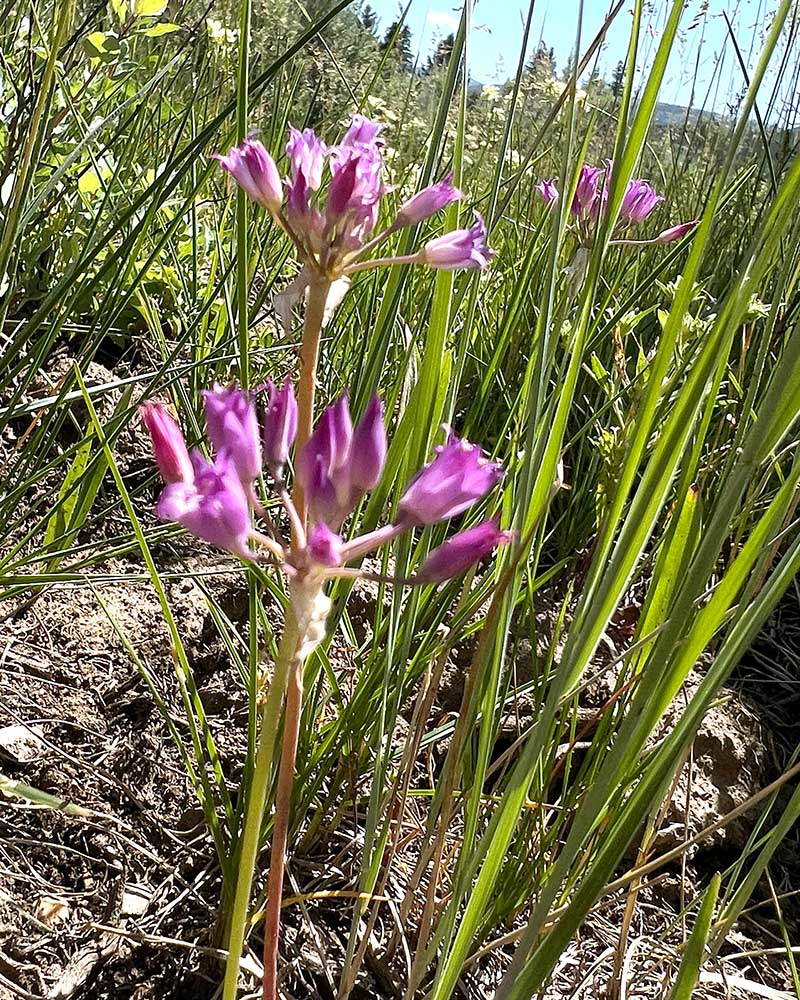Allium acuminatum – tapertip onion
- umbels with 10-40 flowers atop a tall scape
- 6 magenta (or white) tepals per flower
- few leaves and all withered prior to flowering
- dry hillsides, sun-exposed rocky meadows and slope, volcanic areas
Also known as: Hooker’s onion
There are a number of features that distinguish tapertip onion from other species in the Valley. First, it is found on dry hillsides and sun-exposed rocky meadows and slopes, even in volcanic areas, rather than in understories or along stream banks. Second, the flowers appear after the leaves have died. Third, it only had two or three leaves to begin with. And finally, it tends to spread so prolifically from both seeds and by division, that a whole hillside can be populated with it (this has allowed it to be featured in restoration projects in other areas).
The flowers are borne on a tall scape (ca. 12″) in umbels. A single inflorescence may have 10 to 20 to 40 flowers. Each flower has six tepals, magenta (or deep rose or white) with yellow anthers, and it takes very little to see the anthers (unlike, say, A. brevistylum). The individual flowers have distinctly flared tips, but this is not in itself diagnostic.
The flowers appear in early spring. The plants then quickly set seeds and go dormant, disappearing by mid-summer.
Tapertip onion produces only two or three grooved, basal leaves directly from grayish brown egg-shaped bulbs. The leaves are long with narrow, tapering tips. These wither, or even disappear, prior to the bloom.
And the actual onions: these are the bulbs from which everything grows. They are spherical and less than 1″ across. As expected, they smell like onions.
| Color | |
|---|---|
| Family | |
| Blossom size | |
| Inflorescence size | |
| Inflorescence type | |
| When? | |
| Where? |

